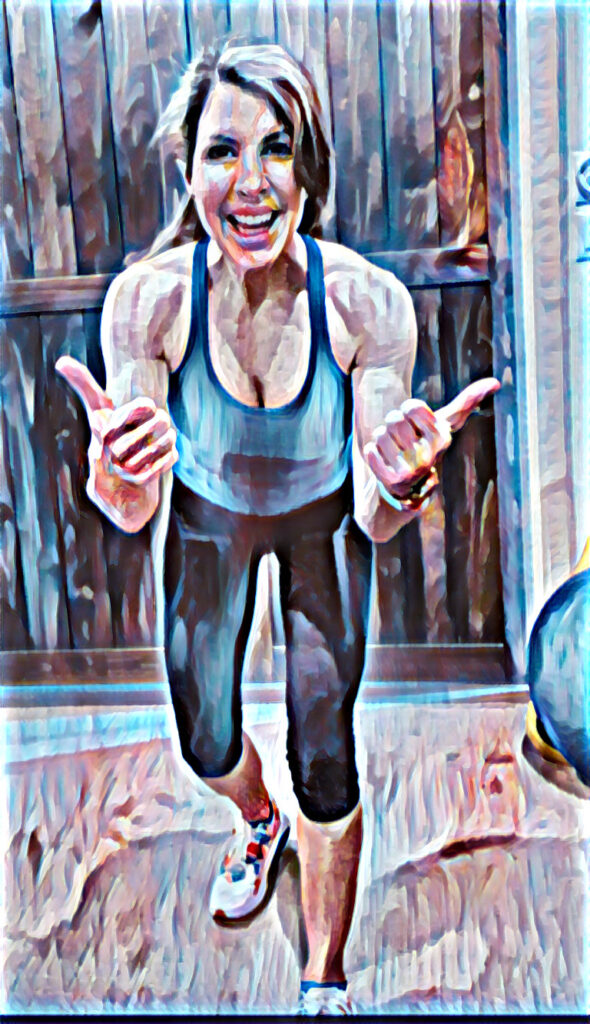Lifting weights is what I’m talking about! Resistance training. Working out with dumbbells, machines, barbells, bands, medicine balls, your own body weight, suspension training — or ANYthing for that matter that builds your muscles and bones. Why lift? Because my friends, lifting weights is the Fountain of Youth.
Seriously, resistance training can reverse most aspects of aging all the way down to your gene level. Going heavy activates the production of muscle stem cell satellite cells where the mitochondria apparently rejuvenate in a process called gene shifting. After just 6 months of resistance training 2-3 times per week, the biochemical, physiological and genetic signature of older muscle is “turned back” nearly 15 or 20 years. Pretty impressive, eh? No pill does that…
Resistance training helps us regain our strength, balance and coordination. It also improves bone mass and density, protects us against osteoporosis and lowers the chances of broken bones if we fall. Regular, progressive resistance training also improves our muscles’ longevity profiles at the molecular level. And, because our bodies respond quickly, it can take as little as 2 weeks for a regular program of progressive resistance training to increase protein synthesis rates in older adults. Want more science? Resistance training positively influences the neuromuscular system, hormone concentrations, and protein synthesis rate. Wowza.
Listen, I’m a big fan of moving. Exercise is good. Regular aerobic exercise like walking, swimming, running, or cycling strengthen the heart and lungs and can improve our muscle tone, but resistance training is “holy grail” of exercise because it can substantially slow (or reverse) declining muscle mass, bone density, and strength that used to be considered “normal” aging. Research shows that adopting a lifestyle of fitness including aerobic training and resistance training helps stave off these age-related declines, and boosts brainpower. I find it interesting that aerobic and resistance training provide complimentary, but not overlapping benefits. Resistance training improves higher-level brain functioning such as effective multi-tasking, learning ability, decision-making, attention span and conflict resolution, while aerobic exercise improves memory. Things that make you go, “Hmm..!” Am I right?
Resistance training is also one of the best ways to increase your energy and boost your metabolism. Did you know that just 12 weeks of resistance training can significantly increase your levels of testosterone and DHEA, a hormone your body produces that helps with testosterone and estrogen production? The result is improved bone and muscle strength, slowing age-related changes in your body, strengthened immune system, and improved energy levels, mood and memory.
The ACSM (American College of Sports Medicine) recommends resistance training for people over 50 at least 2-3 times a week, focusing on the major muscle groups including arms, legs and core. While lifting light weights provides some benefit, it’s best to stress your body by using a weight you can’t lift more than 8-12 times (or repetitions).
It’s important to keep in mind that the workout intensity is critical, because real muscle fatigue is what triggers change in the body.
You can follow the steps below to ease into strength training and reap its rewards:
- Start strength training 2-3 times per week, and add a rest day between workouts.
- If you’re a beginner, work with light weights, and slowly add weight as your body adjusts to the new exercise.
- If you don’t know the proper form or have pre-existing injuries, it’s a good idea to work with a personal trainer a few times to understand the basics and reduce the possibility of injury.
- While it’s normal to feel sore the day after resistance training, you shouldn’t experience pain while lifting. If you do, that’s a warning sign of an existing injury, so again, it’s a good idea to work with a trainer.
- As you get stronger, plan on adding weight once you can lift a weight properly without pain 15 to 20 times.
Take a look at your fitness routine and be sure to incorporate cardio, strength, and flexibility to help improve your overall fitness and mobility. And remember, the best way to ensure you’ll move consistently and accomplish your goals is to enjoy the journey. (And ladies, I promise…you won’t bulk up!)
Holler if I can help.
Until next time, live WELL, laugh often and LIFT!



